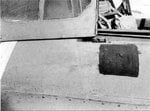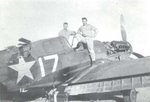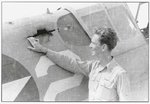zetland76
Airman
If a fighter returned from a Battle of Britain dogfight and it had 3 or 4 clean bullet holes but no damage to vital parts how was the aluminium skin patched up. When would it receive a more permanent repair and how would this be done?
Was it the same procedure for German and British machines?
Thanks
Mike
Was it the same procedure for German and British machines?
Thanks
Mike



